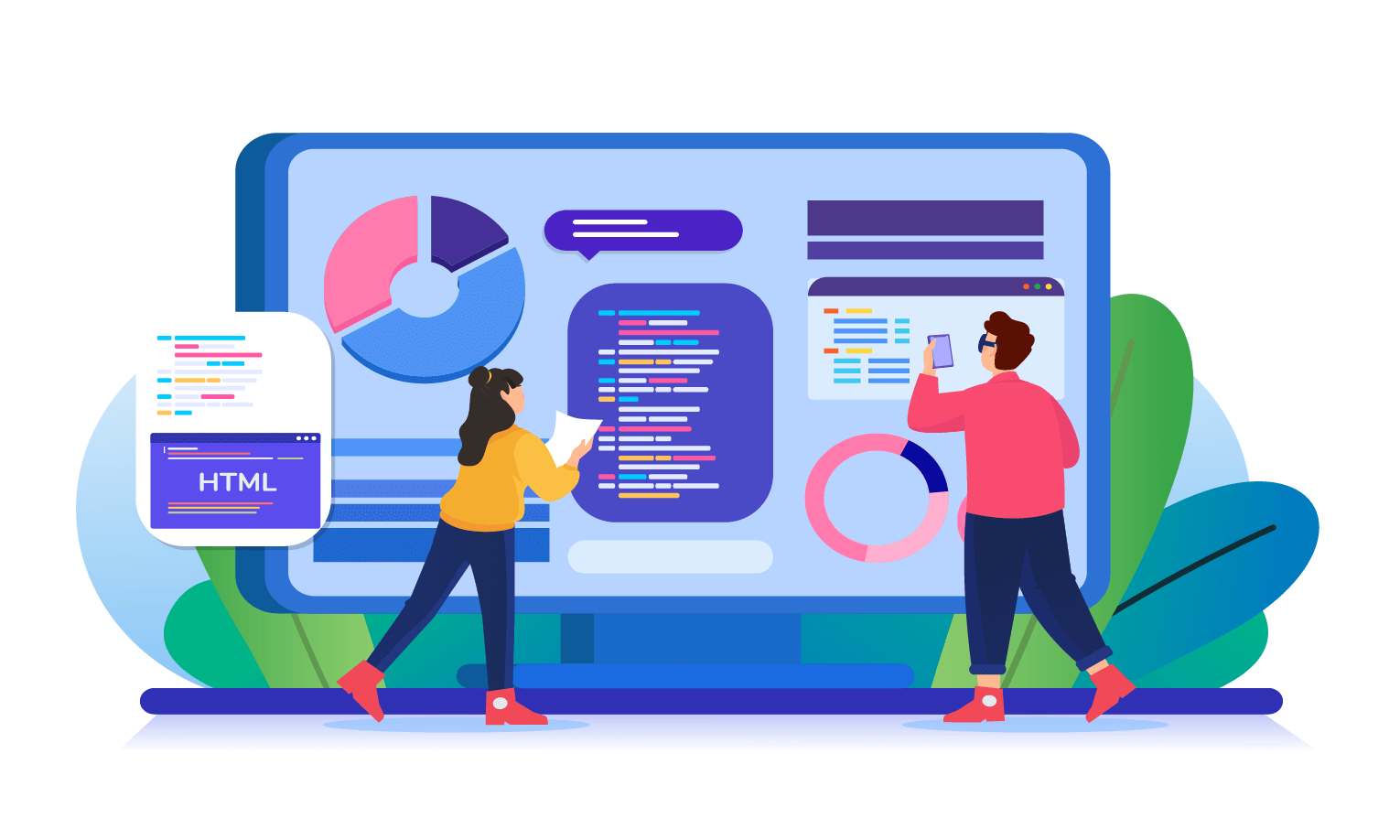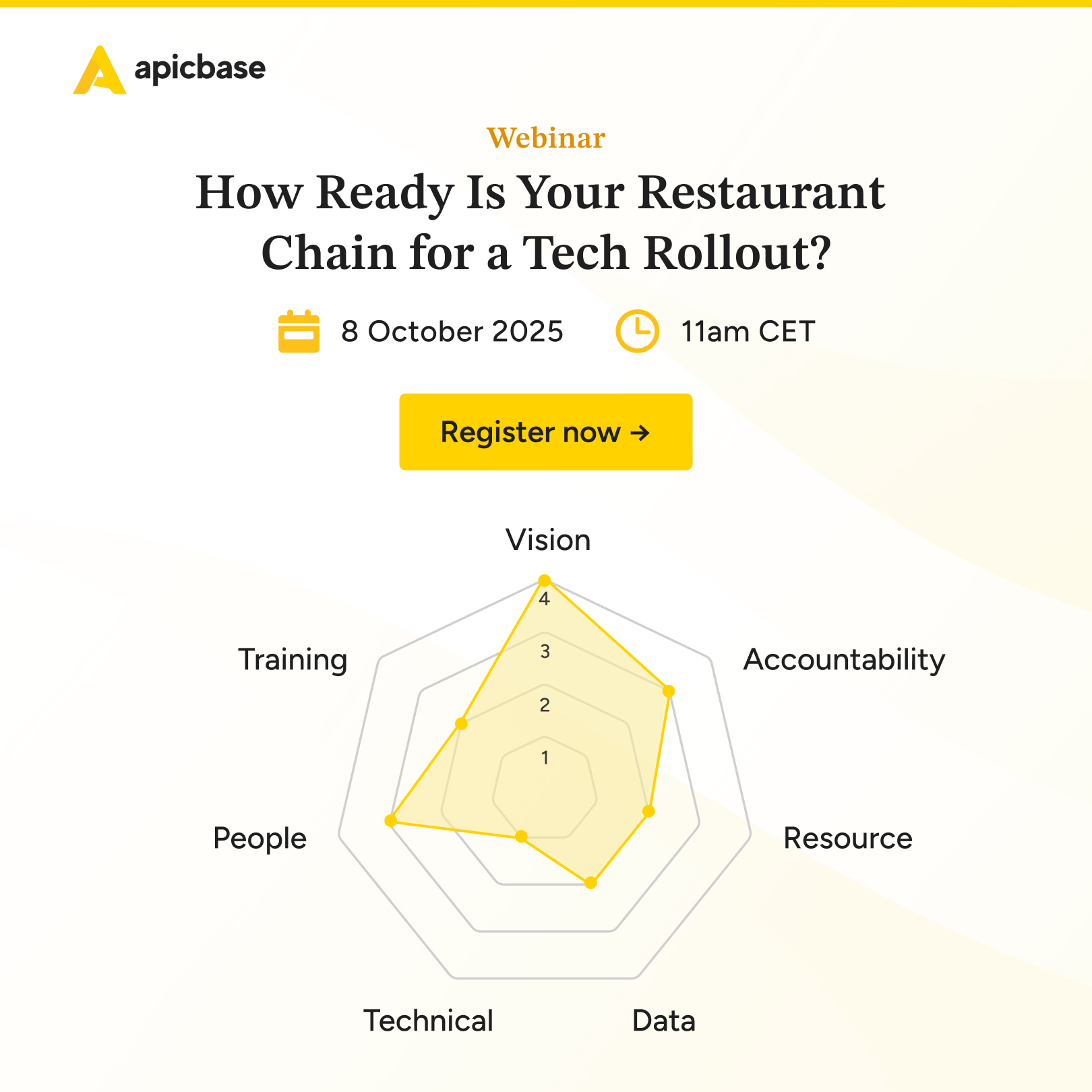New technologies, including AI, are revolutionizing the way food companies are run. The tech choices you make today affect your business goals in the long-term.
If you are in charge of tech implementation at a multi-unit F&B business, you’ve probably read 100 articles, sales sheets, and white papers telling you that this or that solution will solve your biggest problems.
It can leave you scratching your head, even if you are a top technology wizard.
The reason is, you not only want to know if the software will deliver on its promise – though that is part of the deal of course – you also want to make sure that it is strategically the right choice.
That is why, in this article, we elaborate on the question: how to find the right food and beverage tech strategy for my foodservice business?
The best place to start off your research is the different types of software:
- legacy systems,
- point solutions, and
- platform solutions.
Why start here?
Because each type will put you on a different path. If that path leads to where your organisation is going – i.e. it aligns with the overall business strategy: then bingo!
If not, steer clear, even if it is tempting to say yes.
When the type of tech doesn’t fit your mid and long term strategy it will become an anchor.
That is when IT workarounds start creeping in. Tech patch-ups are costly, and well, they don’t exactly help you make things more efficient. Let alone help you get the necessary data insights to:
- improve operations,
- control costs, and
- keep your staff happy.
Once you know what type of solution you require, the next step is to compare the different vendors, which is a harrowing task in itself.
No worries, we’ve got your back. Check these 9 must-have features for kitchen management software in a multi-unit food business. They will guide you through the process of comparing specs.
But for now, let’s focus on the task at hand – finding out what the difference is between a point solution vs a platform solution vs a legacy system.
Legacy Systems – Relics or Reliable Old Friends?
Legacy systems are sometimes referred to as mastodons, after the oversized land mammals that once roamed the Great Plains of North America.

The grassy plains can be seen as the restaurant tech landscape with the old mastodons initially roaming and grazing to their heart’s content without much competition.
These legacy systems were first on the scene as restaurants started to embrace technology for recording orders, taking payments and managing purchases.
Main characteristics
- Long track record
- Offer a wide range of features
- Derived from non-food-specific ERP and CRM systems
- Hard to integrate
- Not cloud-based
- Less agile than modern solutions
In many cases, legacy solutions aren’t designed specifically for restaurants or food businesses. Some large-scale catering corporations, for example, use ERP systems that were originally developed for retail logistics and then modified for f&b purposes.
We can all agree that shipping shoes is very different from stocking perishable fruits and vegs.
That is when the trouble starts. The IT guys have to come up with rigidity fixes to get the system to do what it is supposed to do. Which often leads to trying to integrate with other tech solutions.
The thing is, these legacy systems come from the old school. They are often custom build and don’t integrate well.
On top of this, legacy software for restaurants often runs on local servers in the building, rather than in the cloud, so they don’t offer the benefits of different departments or units being able to access and share data on the go.
And if the servers go down, the whole system is unusable.
Legacy systems also tend to run on bulky hardware. In the modern restaurant, these beefy units are redundant and take up precious front-of-house real estate.
Conclusion
Sticking with a legacy system as part of a restaurant’s F&B tech strategy might make sense for some but for a multi-unit food business that is looking to grow, there are better options.
Point Solutions – Highly Specialized Tools
Going back to our large land mammals grazing the great plains, a point solution can be seen as a loner in the landscape.

A point solution is a specialist that has carved out an evolutionary niche and is making the most of its expert skills. Like an anteater whose long snout is uniquely adapted to penetrate the anthill and feed on the nutritious insects that no other animal can reach.
Main characteristics
- Specialist software
- Great at solving a specific problem
- Relatively cheap to implement
- Prone to creating datasilos
- Quick fix but not futureproof
A point solution lacks broad power but is adept at one specific task. As such, it doesn’t directly compete with the mastodon system which has a broader range of features.
An example of a point solution in the restaurant business is a food cost calculator. It is designed to make it easier to calculate food costs accurately by taking in raw data and crunching the numbers.
What it doesn’t do though, for example, is link up with restaurant inventory management software to get accurate, real-time data. Or sync up with analytics software to share the data with other departments to figure out costs across the business.
In other words, a point solution creates its own datasilos.
A point solution solves one problem well. But as a multi-outlet operator, you have 100s of these problems to solve.
Are you going to implement hundreds of point solutions?
Point solutions are often turned to in a moment of panic or crisis when decision-makers aren’t thinking about the bigger picture. A point solution is easier and quicker to implement than a broader solution and might only cost around 25-50 euro a month.
So it is easier and cheaper to implement, but the costs quickly mount when you need more solutions at multiple locations. And this also means you must manage multiple databases, systems, and types of hardware, which leads to more difficult IT support and troubleshooting.
Conclusion
Point solutions are great in one department but this might come at the expense of the organisation as a whole. If the goal is to future-proof your restaurant’s food and beverage tech strategy, then point solutions aren’t an ideal option.
A Platform Solution – Built To Grow
A platform in our Great Plains metaphor is a more intelligent beast that works together with other specialists to create a multi-skilled operation.
Like a herd of bison. Each is strong and powerful in a particular area, but the real strength is the way they work together and communicate effectively to become more than the sum of their parts.

A platform allows you to build your own solutions specific to your organisation using best-of-breed tools and by sharing the data group-wide across systems.
Main characteristics
- 360°-view
- Agile
- Multi-site
- Cloud-based
- Futureproof
You get the benefits of the specific problem solving of a point solution, but also the benefits of the integrations with other processes and solutions, which makes a platform an agile solution and a solid foundation for your tech ecosystem.
Platforms tend to store data in the cloud as SaaS solutions, which allows access from multiple locations and seamless roll-out of upgrades and updates across the whole business.
Platforms are able to provide a 360-degree view of customers, promotions, inventory, and more across channels.
They are designed to communicate data well between different areas of the business, even linking with smart devices, suppliers, POS systems, and other tech solutions. The relationships with other tech providers are at the core of a platform solution.
Conclusion
A platform solution gives operators the ultimate flexibility. The road to success is rife with potholes, detours and u-turns. A platform has the ability to absorb those roadblocks and keep the operation on track for growth.
While platform solutions might not offer every single benefit of a legacy system or point solution, they still are the best starting point for your restaurant’s F&B tech strategy.
Introducing Apicbase – All-In-One Food and Beverage Management Platform
Apicbase is a fully-fledged F&B management platform, one such platform that uses key integrations to provide a comprehensive food management system for
- ghost kitchens,
- multi-location restaurants,
- hotels, and
- large-scale caterers.
Apicbase offers the full spectrum of foodservice management tools in a seamless ecosystem by integrating with front-of-house systems, especially POS partners, HR and staff management tools, wholesale grocers and accounting systems.
This approach makes Apicbase:
- Futureproof – build your platform as your business grows adding modules as you need them.
- Agile – Apicbase integrates with key industry partners and will continue to forge new relationships as new technologies emerge.
- Streamlined – one system to store and manage data in a consistent way so that it can be used to improve every aspect of your business – your single source of truth.
- Scalable – add new units, workstations, channels and locations as you grow. All information is instantly available to the new crews: production plans, bill-of-materials, recipes, menus, allergen reports, nutritional values calculations, technical sheets, CCP documentation… everything is ready to go.
Choose The Right F&B Tech Strategy
Tell us about your goals and we’ll help you get there.




